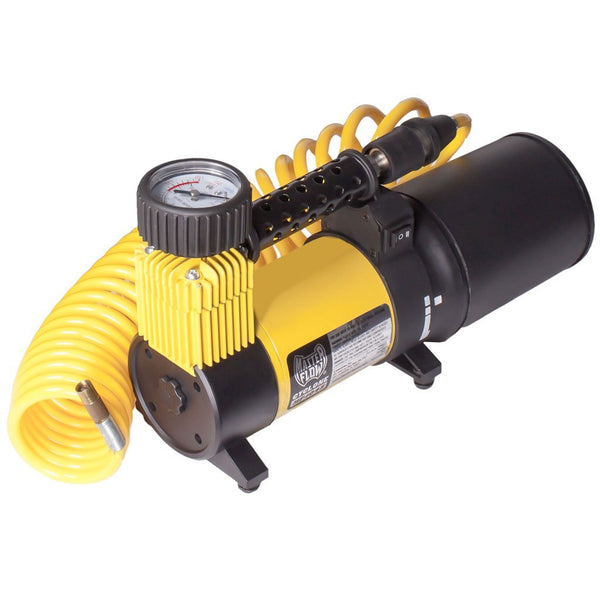Your Cart is Empty
Tires are easily one of the most crucial parts of your car. However, many drivers don’t give them the attention they deserve. Keep in mind that poorly maintained tires are likely to lead to deadly or dangerous accidents and can have a negative impact on the vehicle’s handling.
When was the last time that you took a couple of minutes for checking the condition of your air pump for car tires? Don’t remember? Well, you are not alone. Due to their overall durability and long tread life, people usually consider tires an almost static car part, no different than various other mechanical parts.
It is imperative for all drivers to regularly inspect their car tires for tread depth, proper inflation, and sidewall condition among others. This is because tires do change due to many reasons, such as temperature fluctuations, seasonal changes, mileage accumulation, and rough roads.
Due to their changing condition as well as immense influence on your vehicle’s safety and capability, your tires deserve more attention.
Here is a simple tire check you can perform in a couple of minutes. Performing this quick check on a regular basis can help you stay safe on the road.
You should inspect your car tires for any condition or damage that would warrant their replacement. You should look at both the sidewalls and tread for any scrapes, cuts, punctures, bumps, bulges, or cracks. Also, look for irregular cracks, cuts, or separations across the tread of your tire.
Nails, metal pieces, screws, and rocks could embed in the tire, which can puncture the liner and cause a leak.
Have a tire service expert take a closer look in case you see anything suspicious.
We recommend you to keep a handheld pressure gauge in your vehicle at all times. It is worth mentioning that the ideal or recommended pressure for your car’s tires is on the inside of the driver’s side door of the vehicle. Keep in mind that over-inflated or under-inflated tires may feel loose, especially when steering and would have a greater stopping distance in most panic braking situations.
You should verify the PSI in the tires is within a standard range. Also, make sure to check all tires to ensure you inflate them to the correct PSI. You can use a tire pressure gauge for this exercise. A few styles of pressure gauges are a dial gauge, a stick gauge, and a digital gauge.
To be sure you're always driving with properly inflated tires, check your pressure frequently and always have an air pump for car tires like superflowair on hand. Also, a 12 Volt Portable inflator provides a fast and convenient solution to drivers who have a flat tire.
Having a suitable tread depth is vital to ensuring the safest driving experience. In case the tread wears out, you might not have sufficient traction to brake or accelerate safely, particularly in wet or slippery conditions.
It is simple to check your tread depth. To check the tread depth, insert a penny between the tread blocks of the tire. You shouldn’t be able to see the top of the President’s head with Lincoln’s head upside-down.
On the other hand, if you are able to see any space between the edge of the penny and Lincoln’s head, your tread is wearing, which means it’s time for new tires.
It is vital to see if your valve caps are tight enough to reduce the risk of air leakage, which will also prevent the entry of dirt into your tires. Tighten if required.
Although there is no specific rule when it comes to the age of a tire, storage, use, and various other variables can influence the life of your tires. An industry engineer aptly put it, “tires often have the shelf life of gravel if they are unused.”

Depending mainly on how much you drive every year, your tire tread can last for several years. However, only because your tread isn’t worn out, it does not imply that your tires do not need replacement.
Following industry standards, Bridgestone recommends that you should remove tires from service every ten years after the date of manufacture. For determining the tire age, all you have to do is look at the DOT stamping on your sidewall. You will see a four-digit number at the end of this DOT stamping. This is the date code. The last two digits are the year while the first two digits are the week. For instance, 4617 means that your tire was manufactured during the 46th week of 2017.
And that’s all! Performing a safety check on your tires is as simple as 1-2-3. Now, you only have to perform this tire quick check regularly to keep the tires in the best shape.
Comments will be approved before showing up.